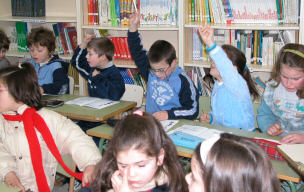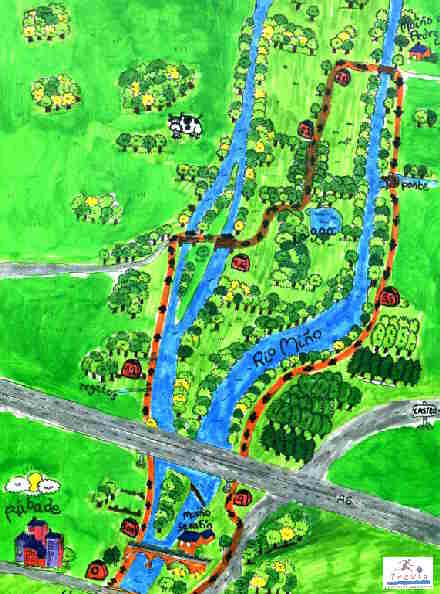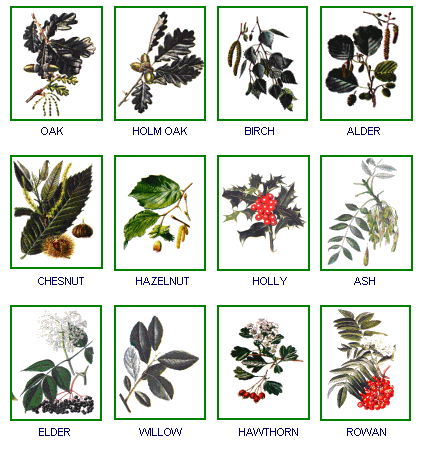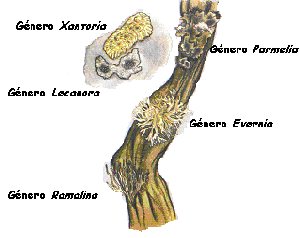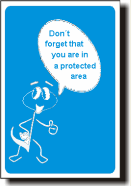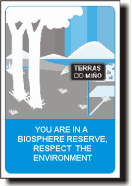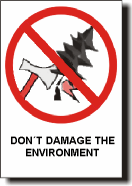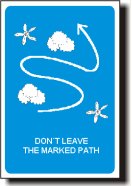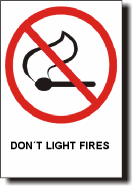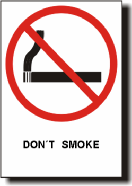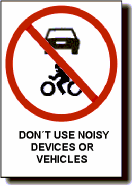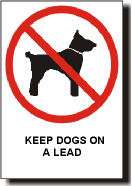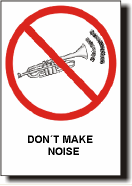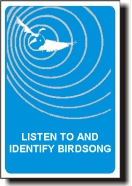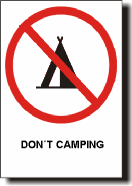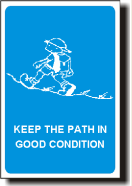
|

| INTRODUCTION | ||
|
“To love something first you have to get to know it”. This premise is a faithful reflection of the reality in which we live, and its aplication is valid for all areas of life. Because of this, if we want conservation activities to be successful, we should make it easy for people to get in touch with nature, in such a way that the lack of appreciation as regards natural values which exist at the moment is reduced until it disappears completely, and in this way we help to improve the protection of the area. Given that the network presents a limited capacity for this, apart from the activities which take place “in situ”, we are going to present a number of questions, walks and games which permit the internauts to get close to nature and to interpret the signals which this gives us: |
||
| WHAT WE SHOULDN´T FORGET | |
| Water, a vital resource which is running out | |
|
Water is a molecule made up of 2 atoms of hydrogen to one of oxygen and is colourless, doesn´t have a smell and is tasteless. It´s the only substance which can be found in 3 material states (solid, liquid and gas) at normal temperature. 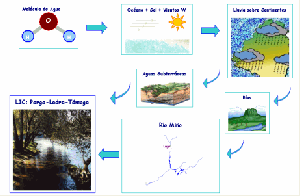
It covers three quarters of the planet of which 97% is salt water making up seas and oceans and the rest is fresh water. Of this latter 80% is stored in glaciers, 19% is underground water and 1% is surface water so we can consider fresh water to be a very scarce natural resource. The hydrological cycle is the process which keeps the amount of water constant via the interchange between the surface and the atmosphere through evaporation and precipitation, processes which depend mainly on solar energy. Most precipitation falls on the sea but that which falls on land forms streams which in turn form rivers or are filtered through the soil and into underground water. 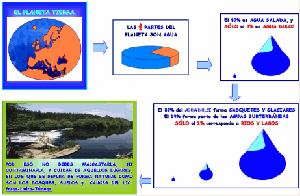
This is the vital component of all life, animal and vegetable, and is part of reactions produced in our organism.Water is needed by our organism and to carry out other activities like agriculture, production of energy etc. The speed at which we consume this resource is more than the duration of the cycle so there´s no time for it to be renewed. For this reason we should be sensitive towards its prudent use. Water is vital for life and most socioeconomic activities but as it is scarce and its associated ecosystems are damaged,both state and regions should develop projects to protect this resource and associated ecosystems among others the SCI: Parga-Ladra-Támoga. |
In the south of this island there was existed an old path that it was passed between chantos of the place. Under the directives of conservation marked by LIFE project, this old path was recovered, permiting to do a tour in the south part of this space. The visitor will can to enjoy for this tour in 4 hours approximately, who will pass between forest of bank, meadow, flood plain forest, chantos… enjoying the flora and fauna of the place. Alder trees, Ash trees, Oaks, Holly Bush, Espiño, aquatic plants like Nenúfares, Ferns, Espadañas, Carrizales and emblematic species like the Otter, the Common Kingfisher, the Blackbird, the Grey Wagtail, everyone will go with the visitor in the route. The presence of the human been make itself present too, even batuxos, traditional boats of the place that splash the course of the Miño’s land, in his pass trough the Insuas river.
For to make more easy the knowledge of this ambience, like this the conservation, the Inludes has been made the signpost of this environment by interpretation panels. It’s about an exhibition that can be found in the Insua Pequena, zone of approach of the Ruta das Insuas. A wood bridge introduces us in the Insuas, where the flora and fauna, the habitats, the landscape of the water, like this description of the Reserva da Biosfera Terras do Miño , La Red Natura 2000 and the Insuas do Miño show to visitor with a didactic way and trying to camouflage intos the environment trough treaty wood.INTERPRETATION PANELS
|
||||||
| NATURE WALKS | |||
One way of getting to know the nature and countryside of this area is to get to know it “in vivo” and so we propose this trekking route which goes through the Insua de San Roque crossing different habitats which have been catalogued as SCIs and included in the Natura 2000 Network. In addition, there are panels installed along the way which give extra information to the visitor about habitats and species and recommendations and restrictions about certain activities. TREKKING IN INSUAS DO MIÑO
|
|||
|
ENVIRONMENTAL GAMES
The following are activities or games which can be carried out when visitors come to this natural area. They are of varying degrees of difficulty according to the visitor´s knowledge of the species or ability to draw what it represents. IN THE INSUAS DO MIÑO THERE´S NOT JUST WATER We can find different kinds of trees which are placed according to how well their roots are adapted to almost permanent presence of water. There are many trees to be found in the river bank: willows, alders, ash, birch, hazelnuts... Try to identify them!.
LET´S ANALYSE THE AIR Lichens are living beings formed by the association of fungus and weed. This symbiosis means that the fungus gives the weed protection and moisture for it to live and the green weed provides the nutrients necessary for photosynthesis.
This is such a perfect union that lichens can live in the most hostile environments like stones, ground, wood etc. They are however very sensitive to air pollution and so can be used to analyse the quality of the air in the Insuas.
|
|
| RECOMMENDATIONS FOR THE PUBLIC USE OF THIS AREA AND PROTECTION OF THE INSUAS DO MIÑO | |
For everybody to enjoy and maintain this natural beauty we should follow these basic recommendations: |
|
|
When you visit the Insuas do Miño, don´t forget that you are in a protected area where measures have been taken to protect and conserve the environment.
|
|
Respect the vegetation, fauna, and traditional buildings you will find during your visit here, they are everybody´s heritage as you are in the Terras do Miño Biosphere Reserve and in a Site of Community Importance(SCI), designated a Natural Protected Space.
|
|
Nature is your companion, respect the flora and fauna. Don´t pick water plants or take little animals, some are in danger of extinction or in a critical situation and thus protected.
|
|
A walk in the country can be a fantastic experience. Don´t leave the marked path so as not to damage the flora and fauna in this area. Don´t use vehicles on the island.
|
|
Don´t destroy in one hour what nature took millions of years to create. Don´t light fires, throw away cigarette ends, forest fires are very dangerous and cause serious ecological and economic damage.
|
|
Don´t smoke during the walk, a badly put out cigarette end can cause a fire.
|
|
Don´t throw away rubbish even if it is organic, use the bins along the way.
|
|
Water is the source of life so don´t dirty the water, don´t use soap or detergent if you wash in the river because its purifying capacity is limited.
|
|
Don´t use noisy devices or vehicles, respect the silence and the animals it shelters.
|
|
Dogs are only permitted on a lead and under control.
|
|
If you in group please speak quietly so as not to startle the animals.
|
|
During your visit you can get away from the city noise and listen to and identify birdsong.
|
|
Enjoy the fresh air but remember that unlicensed camping isn´t allowed as it is one of the main causes of pollution and damage to the environment.
|
|
Trekking gives you the chance to get to know this area and the people who live here. Respect them and their property. Contact with nature and countryside is assured so these paths should be privileged access to nature and your enjoyment f it. After your walk, the path should continue to be in good condition as attractive as before
|
| “If you look after Nature, it will look after you.” | |


